
Wine Culture and Information since 2002 - Volume 22
 Wine Culture and Information since 2002 - Volume 22 |
|
Tasting White WinesAfter having discussed general techniques for tasting wines, it is time to put into practice the many concepts applied to any type. This month we will discover white wines |
|
The techniques for the tasting and the organoleptic evaluation of wines are, in general terms, applicable to any kind of wine, each one of them will be evaluated in its aspect, aromas, taste and balance, however the peculiar differences of every category of wine require the taster to do the evaluation by considering specific factors according to the category itself. Apparently, wines differ one from each other in the color, an obvious characteristic that would make the taster not to consider all the other differences. If it is true that every wine, even belonging to the same type, is different from any other else, this consideration is surely true among the many types. Colors, nuances, aromas and taste are organoleptic characteristics that every wine has, however it is obvious that each one of these characteristics varies from wine to wine, even more clearly, from type to type. Colors of a specific category does not have anything in common with the colors of wines belonging to other categories; the same is true for their aromas as well, their taste, their balance. These differences, in general terms, are determined both by the variety of grapes and by production methodologies, in a more specific way, besides what was considered so far, are to be added the production area, climate conditions, grape ripeness level, cultivation techniques, type of soil and quality of grapes. A series of characteristics that, alone, justify the fact of evaluating with proper attention every type of wine and, last but not the least, suggest the adoption of specific evaluation “strategies”.
|
|
The variety of colors commonly observable in white wines is quite vast, it depends by the type of grape, certainly not in a determinant way as in red wines, the way they were pressed and, particularly, the wine making technique. Information that could be get from color are mainly indicative about the wine making technique. In general terms, a wine having a pale color, almost colorless, is usually the sign of a wine making produced with excessively strict and industrial systems, moreover it could also be the sign of a very high yield and therefore of grapes of disputable quality. On the other hand, a young white wine with very intense and deep colors is usually the sign of a wine fermented in cask. These rules, to be considered as general, are however to be treated with proper exceptions according to the type of grape used to make that specific wine. As a matter of example, a wine produced with Riesling grape usually has a pale yellow color, therefore this cannot be considered as a lack, certainly a wine produced with Chardonnay grape, in particular when aged in cask, has a more intense color. Color in white wines, just like any other type of wine, also indicates their age, the same wine will show in its youth evident greenish nuances, up to getting, at the end of its life, even brown colors; as a matter of a rule, every white wine tends, with age, to darken its color. In this evolution of colors, white wines show in their youth pale yellow colors, sometimes almost colorless, with evident greenish nuances, then they usually get lemon yellow, straw, gold, amber and, at the end, brown or deep amber. Let's see in detail the many types of colors and the indication that can be get from each one of them:
|
|
In a white wine, one usually expects fresh aromas which evoke flowers and fruits, an almost obvious characteristic as white wines are usually consumed when are young. In general terms, young white wines are characterized by aromas of white flowers (such as hawthorn) and fruit with white pulp (pear, apple), in young whites having a more complex character can also be found yellow flowers (acacia, broom) and fruit with yellow pulp (peach, apricot, medlar) and, sometimes, other fruits such as hazelnut and almond. Mature whites are characterized by dried flowers, honey, dried and toasted fruit. Aromas in a white wine depend by many factors, among the most important ones we find the variety of grape and its level of ripeness. Wines produced with unripe grapes generally have vegetal aromas, such as mowed grass and leaves, whereas the ones produced with more mature grapes have aromas of flowers and fruit, grapes that reached full maturation, as well as overripe grapes, have more complex aromas such as honey and, often, cooked or dried fruit. One of the grapes that best expresses this aromatic variety according to its ripening level, is Sauvignon Blanc. Wines produced with this grape, when unripe and not fully mature, have rather vegetal and “green” aromas, such as the typical aromas of box, elder, green bell pepper, tomato leaf, sage and other aromatic herbs. Wines produced with the same grape, when ripe, have charming aromas of flowers, such as acacia, honeysuckle, and more properly, aromas of fruit such as exotic fruits, peach, apple and pear. Aromas in white wines can also express the so called aromatic character, that is the typical aroma of grape, a characteristic which is practically exclusive to aromatic or semi-aromatic grapes. The family of aromatic grapes it is not vast, however when they are used for the production of wine, their presence is rather evident. The aroma of grape can be easily found in Muscat Blanc and Gewürztraminer, the olfactory evaluation of wines made with these grapes is an excellent exercise for the neophyte which is getting into wine tasting as well as for the full understanding of this charming aroma; in these wines the aroma of grape is so strong and evident which is practically impossible not to notice it. Every grape whose wines have aromas similar to Muscat Blanc or Gewürztraminer are considered as aromatic. This aroma is also present, even though with lesser intensity, in other grapes and it will clearly be perceivable even among all the other aromas. These grapes are called semi-aromatic. In white wines are often found aromas typical of aromatic herbs or seasoning herbs such as sage, thyme, fennel, lavender, mint or lemon-verbena. An aroma which is getting more and more frequent in white wines is the one of banana, a peculiarity of certain grapes, such as Chardonnay, as well as of those wines which underwent the process of malolactic fermentation. Even typical aromas of citrus fruits and their flowers, such as lemon and orange blossom, give wines a very pleasing touch of class. Aromas of flowers are however the most charming characteristics of whites, in these wines the range of flower aromas is rather vast and complex, from white flowers to yellow flowers, in white wines we can find the delicacy of a blossoming garden. Among the most common aromas of flowers in white wines can be found acacia, which is often a peculiarity of Chardonnay, hawthorn, present in many white wines, yellow or white rose, typical of Gewürztraminer and Muscat Blanc, the noble lily, present in wines produced with Riesling, Pinot Gris and Gewürztraminer, as well as elder flower usually found in Sauvignon Blanc. Talking about flowers, it is sometimes possible, in rare cases to tell the truth, to find in white wines aromas of flowers typically common in red wines. This is the case of violet, present in many red wines, which can be sometimes perceived in wines made with Viognier grape and produced in Rhône Valley and in certain white wines of Valle d'Aosta. Even the aroma of jasmine and iris, also present in red wines, can be perceived in some whites, particularly in certain wines from Sicily or France. The aromatic freshness of flowers in white wines is an aromatic characteristic that, with time, tends to vanish, or better, it tends to transform into dried flowers, in other cases it even turns into aromas of herbal teas. Likewise, aromas of fruit tend to transform into dried or cooked fruit. In certain white mature wines there can also be found aromas which directly recall honey and jams.
|
||||
|
The main tasting characteristic of white wines is represented by acidity, a factor which gives crispness and agreeability to this type of wine and that is a peculiarity that marks every young white wine. The presence of acidity is fundamental in white wines because it contributes in a determinant way to its balance, this organoleptic sensation is the main element that is capable of contrasting, that is balancing, alcohol. The diagram shown in figure illustrates the relation among the many organoleptic elements in the determination of balance.
Acidity in white wines tends to diminish with time and therefore after a specific period of aging in bottle, whites tend to lose their typical crispness, a factor that certainly make them less pleasing, that is less balanced, and a good reason to appreciate properly white wines during their best time: youth.
|
||||||||
|
The many qualitative aspects in white wines can be better understood by doing a comparative evaluation among the many types and, possibly, produced in different areas. In this practical test it will be given the opportunity to evaluate and to understand the organoleptic differences among white wines. In order to do that, it is suggested to get three wines: a Gewürztraminer, produced in Alsace or in Alto Adige, a young Chardonnay non aged in wood, produced in Sicily or in Collio, lastly, a Sauvignon Blanc, produced in the Loire Valley or in Alto Adige. All wines must be young and produced in the last vintage. By evaluating the aspect of the three wines, Sauvignon Blanc will be the one having a more pale color and will have greenish nuances. Chardonnay will be the wine having an intermediate tint compared to the three, probably a straw yellow, whereas Gewürztraminer will have a deep color, almost tending to gold yellow. At the nose the three wines will reveal very different aromatic characters, in particular, it should be noted the aromatic characteristic of Gewürztraminer, probably present in lesser quantity in Sauvignon Blanc as well, and completely absent in Chardonnay. In Sauvignon Blanc it will be possible to perceive aromas recalling vegetal essences, such as box, green bell pepper and tomato leaf, characteristics which are absent in all the other wines. In Chardonnay will be found its typical aromas of banana and acacia, characteristics that could also be found in all other wines. Proper attention should be paid to the many aromatic intensities, it is more likely that Gewürztraminer will be the one having the highest aromatic “strength”, followed by Sauvignon Blanc and, lastly, by Chardonnay. Aromas of the three wines should be clearly different from each other, each one of them will have proper olfactory characteristics that will be hardly found, saved particular aromas, in the other wines. Even the taste of the three wines will be different. Sauvignon Blanc will be the wine to be more crisp, that is more acid, than the others, whereas Gewürztraminer will seem to be more round and agreeable. Likewise, both persistence and final aromas in the mouth will be different one from each other, it will be more likely Gewürztraminer to be the one having the longest persistence among the three and, certainly, it will leave in the mouth the same aromatic flavor that was perceived by the nose.
|
Wines of the Month |
|
|
|
Score legend Prices are to be considered as indicative. Prices may vary according to the country or the shop where wines are bought |
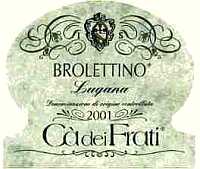
|
|
Lugana Brolettino Grand'Annata 1999 |
|
| Ca' dei Frati (Italy) | |
| Grapes: Trebbiano di Lugana | |
| Price: € 16,50 | Score: |
| This wine shows a beautiful and brilliant golden color and nuances of straw yellow, very transparent. The nose has good personality, clean, elegant, intense, refined and pleasing aromas of pineapple, hawthorn, coffee, broom, litchi, apple, hazelnut and vanilla as well as aromas of wood. In mouth is very correspondent to the nose, very balanced, intense and of good body, pleasing crispness. A well made wine. The finish is persistent with clean and pleasing flavors of pear, coffee and apple. Brolettino Grand'Annata is aged in barrique for 15 months and for 24 months in bottle. | |
| Food Match: Roasted fish, Roasted meat, Stuffed pasta with meat | |
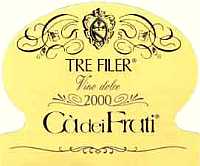
|
|
Tre Filer 2000 |
|
| Ca' dei Frati (Italy) | |
| Grapes: Trebbiano di Lugana (60%), Chardonnay (20%), Sauvignon Blanc (20%) | |
| Price: € 11,10 | Score: |
| A great sweet wine. It shows a beautiful and intense golden yellow color and nuances of golden yellow, very transparent. The nose reveals great personality, intense, rich, pleasing and refined aromas of dried apricot, pineapple, ripe banana, peach jam, broom, litchi, apple, honey, hazelnut, pear, gooseberry and vanilla. In mouth is very agreeable with excellent correspondence to the nose, very balanced sweetness, intense flavors. The finish is very persistent, practically endless, with very long, clean and pleasing flavors of apricot, pear, honey, litchi, pineapple, banana and apple. A great wine. Tre Filer is produced with graped dried on mats and is aged for 12-14 months in barrique and for one year in bottle. | |
| Food Match: Hard and piquant cheese, confectionery, jam tarts | |
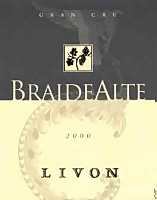
|
|
Braide Alte 2000 |
|
| Livon (Italy) | |
| Grapes: Chardonnay, Sauvignon Blanc, Picolit, Moscato Giallo | |
| Price: € 17,55 | Score: |
| The wine shows a beautiful and brilliant straw yellow color and nuances of greenish yellow, very transparent. The nose reveals great personality, intense, clean and elegant aromas where a wood aroma is clearly perceived followed by good aromas of banana, hawthorn, honey, pear, peach and vanilla as well as hints of rosemary. In mouth is very correspondent to the nose, balanced and intense, very agreeable, round and crisp. The finish is persistent with pleasing and clean flavors of pear, peach, honey and vanilla. A truly well made wine. Braide Alte is fermented and aged in barrique for 8 months and for 12 months in bottle. | |
| Food Match: Roasted white meat, Roasted fish, Stuffed pasta, Soft cheese | |
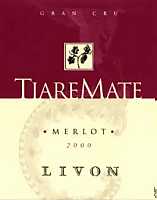
|
|
Collio Merlot TiareMate 2000 |
|
| Livon (Italy) | |
| Grapes: Merlot | |
| Price: € 14,40 | Score: |
| A great wine. The wine shows a beautiful and deep ruby red color with nuances of ruby red, little transparency. The nose denotes great personality with very elegant, intense, refined and clean aromas such as black cherry, cloves, cherry, chocolate, blueberry jam, plum jam, licorice, black currant and vanilla. In mouth reveals a great correspondence to the nose, very balanced attack, full body and pleasing and intense flavors. The finish is very persistent with long and pleasing flavors of black cherry, plum, black currant and blueberry. Simply a great wine. TiareMate is aged for 18 months in barrique. | |
| Food Match: Game, Roasted meat, Hard cheese, Braised meat, Stewed meat | |
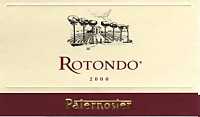
|
|
Aglianico del Vulture Rotondo 2000 |
|
| Paternoster (Italy) | |
| Grapes: Aglianico | |
| Price: € 25,00 | Score: |
| The wine shows a deep ruby red color and nuances of purplish red, little transparency. The nose reveals good personality, intense, clean pleasing and fruity aromas of black cherry, dried fig, blueberry and plum followed by good aromas of licorice, cocoa and vanilla as well as pleasing hints of mint. In mouth denotes good correspondence to the nose, a tannic attack however well balanced by alcohol, intense and pleasing flavors, good body. The finish is persistent with pleasing and clean flavors of black cherry, plum and blueberry. A very well made wine. Rotondo is aged in barrique for 14 months and in bottle and in bottle for 12 months. | |
| Food Match: Game, Roasted meat, Hard cheese, Braised meat, Stewed meat | |
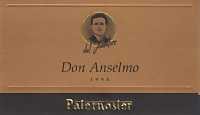
|
|
Aglianico del Vulture Don Anselmo 1998 |
|
| Paternoster (Italy) | |
| Grapes: Aglianico | |
| Price: € 26,70 | Score: |
| The wine shows a deep ruby red color and nuances of ruby red, little transparency. The nose reveals personality, rich, intense, pleasing and clean aromas of black cherry, black cherry macerated in alcohol, carob, chocolate, dried fig, blueberry, plum and dried violet followed by pleasing aromas of vanilla and fennel. In mouth denotes good correspondence to the nose, a tannic attack which is balanced by alcohol. Intense flavors and good body. The finish is persistent with pleasing and clean flavors of plum, blueberry and black cherry. A well made wine which will give its best after a further aging of 2-3 years. Don Anselmo is partly aged in cask and partly aged in barrique followed by 12 months of aging in bottle. | |
| Food Match: Game, Braised meat, Stewed meat, Roasted meat, Hard cheese | |
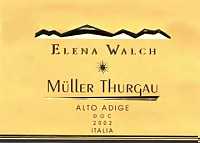
|
|
Alto Adige Müller Thurgau 2002 |
|
| Elena Walch (Italy) | |
| Grapes: Müller Thurgau | |
| Price: € 8,00 | Score: |
| The wine shows a brilliant greenish yellow color and nuances of greenish yellow, very transparent. The nose reveals good personality, with elegant, intense, clean and refined aromas of acacia, apricot, pineapple, banana, litchi, green apple, peach, sage as well as an intense and aromatic hint typical of the grape. In mouth has good correspondence to the nose, a pleasing crisp attack however well balanced, intense and agreeable. The finish is persistent with pleasing and clean flavors of peach, litchi, banana and pear. A truly well made wine. | |
| Food Match: Pasta and risotto with fish and vegetables, Vegetables, Eggs, Crustaceans, Boiled fish | |
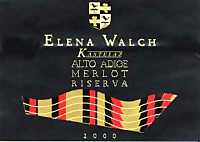
|
|
Alto Adige Merlot Riserva Kastelaz 2000 |
|
| Elena Walch (Italy) | |
| Grapes: Merlot | |
| Price: € 26,00 | Score: |
| The wine shows an intense ruby red color and nuances of ruby red, moderate transparency. The nose reveals clean, elegant, intense and refined aromas of black cherry, plum jam, blueberry, black currant, violet, coffee, licorice and vanilla followed by hints of cocoa. In the mouth is very correspondent to the nose, very balanced, smooth and pleasing tannins. Intense flavors and good body. The finish is persistent with pleasing and clean flavors of black cherry, black currant and blueberry. A well made wine. This Merlot Reserve is aged in barrique for 20 months and for 8 months in bottle. | |
| Food Match: Roasted meat, Broiled meat and barbecue, Stuffed pasta | |

|
|
Gelso del Moro Rosso Negroamaro 2000 |
|
| Vinicola Resta (Italy) | |
| Grapes: Negroamaro | |
| Price: € 4,20 | Score: |
| The wine has a beautiful and intense ruby red color and nuances of garnet red, little transparency. The nose opens up with rich aromas of jams, clean, neat and of personality. There can be perceived good and intense aromas of black cherry, caramel, fig jam, blueberry jam, blackberry jam, plum jam, dried violet and vanilla. In mouth has good correspondence to the nose and a balanced attack, good body and intense flavors. The finish is persistent with pleasing flavors of plum jam and blueberry jam. Gelso del Moro Rosso is aged for 4 months in oak casks. | |
| Food Match: Broiled meat and barbecue, Stuffed pasta, Hard cheese | |

|
|
Salice Salentino 2000 |
|
| Vinicola Resta (Italy) | |
| Grapes: Negroamaro (80%), Malvasia Nera (20%) | |
| Price: € 4,70 | Score: |
| The wine shows an intense ruby red color and nuances of ruby red, little transparency. The nose reveals intense, elegant, clean and pleasing aromas of black cherry, blueberry, blackberry, hazelnut, plum, dog rose, enamel, dried violet and vanilla. In mouth is clearly perceivable an intense and agreeable flavor of blackberry, very persistent. Very balanced and tannins in an agreeable state already. The finish is persistent with clean and pleasing flavors of blackberry and hazelnut. A well made wine. This Salice Salentino is aged for 10 months in oak casks. | |
| Food Match: Game, Roasted meat, Hard cheese | |
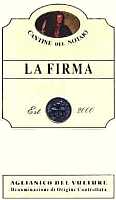
|
|
Aglianico del Vulture La Firma 2000 |
|
| Cantine del Notaio (Italy) | |
| Grapes: Aglianico | |
| Price: € 21,00 | Score: |
| The wine has a beautiful and intense ruby red color and nuances of ruby red, little transparency. The nose reveals personality with elegant, intense, clean and pleasing aromas of black cherry jam, blueberry jam, plum, licorice, leather, dried violet, cocoa, carob and vanilla. In mouth denotes good correspondence to the nose, a slightly tannin attack however well balanced by alcohol. Intense flavors, good body and smooth tannins. The finish is persistent with clean flavors of plum, blueberry and black cherry. La Firma is aged in cask for 12 months and for 4 months in bottle. | |
| Food Match: Game, Braised meat, Stewed meat, Roasted meat, Hard cheese | |
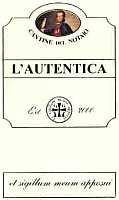
|
|
L'Autentica 2000 |
|
| Cantine del Notaio (Italy) | |
| Grapes: Moscato Bianco (70%), Malvasia Bianca (30%) | |
| Price: € 18,00 - 500 ml (16.90 fl.oHard and piquant cheese, confectionery, jam tarts | Score: |
| The wine shows a beautiful and intense straw yellow color and nuances of straw yellow, very transparent. The nose reveals intense and pleasing aromas where bitter almond is evidently noticed, followed by dried apricot, pineapple, peach jam, honey, pear and vanilla as well as hints of enamel. In mouth denotes a good correspondence to the nose, good balance and intense flavors, sweetness well balanced with the rest. The finish is very persistent with long and clean flavors of dried apricot, honey and peach jam. A well made wine. L'Autentica is produced with grapes harvested in the first week of November and is aged in cask for 14 months and in bottle for 4 months. | |
| Food Match: Hard and piquant cheese, confectionery, jam tarts | |
|
||||||||
|
DiWineTaste Polls
|
| |||||||
Privacy Policy | |||||||


| Copyright © 2002-2024 Antonello Biancalana, DiWineTaste - All rights reserved |
| All rights reserved under international copyright conventions. No part of this publication and of this WEB site may be
reproduced or utilized in any form or by any means, electronic or mechanical, without permission in writing from DiWineTaste. |